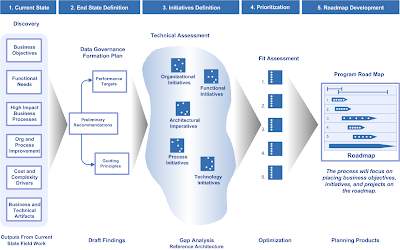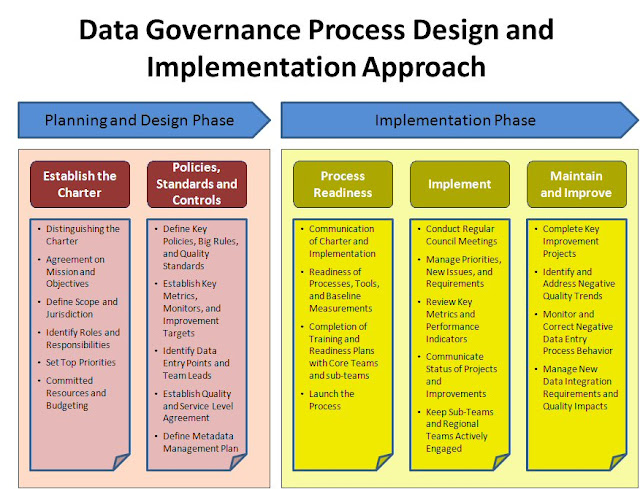1) Develop a clear and unambiguous understanding of the current state
- Business Objectives
- Functional needs
- High impact business processes
- Current operating model
- Cost and complexity drivers
- Business and technical assets (Artifacts)
2) Define desired end state
- Performance targets (Cash flow, Profitability, Growth, Customer intimacy)
- Operating Model Improvements
- Guiding principals
3) Conduct Gap Analysis
- Gap closure strategies
- Organizational
- Functional
- Architectural (technology)
- Process
- Reward or economic incentives
The following diagram illustrates a sample index or collection of the findings focused across the four architecture domains (Business, Information, Application, and Technology) related to the architecture.

4) Prioritize
- Actionable items
- Relative business value
- Technical complexity
5) Discover the Optimum Sequence
- Dependencies of actionable items
- Capacity for the organization to absorb change?
6) Develop the Road Map
A Sample MDM Roadmap






